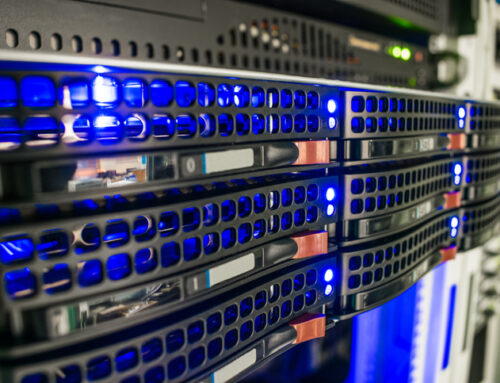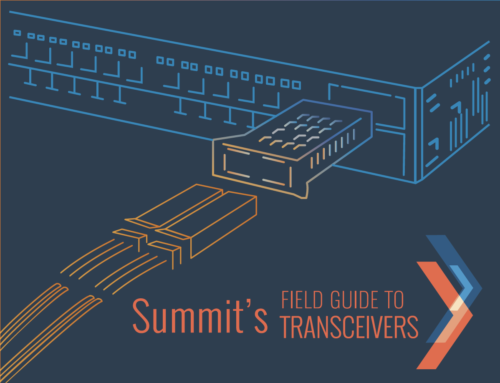The ProLiant Servers from Hewlett Packard Enterprises have become some of the most used servers in the world. They’re known for being reliable and scalable, making them an excellent choice for businesses of all sizes.
HP Enterprises began producing the ProLiant Server Gen 8 in 2012. Two years later, Gen 9 was released. In late 2017, the Gen 10 became available. With 5 years of technological advancements between the Gen 8 and Gen 10, there are distinct differences between them, but which server generation is right for your business?
In this post, we’ll compare the HPE ProLiant Gen 8, Gen 9 and Gen 10 Servers to highlight the features that were added and how expandability increased with each new generation.
HPE ProLiant Gen10
The HPE ProLiant Gen10 server portfolio claims to be the server to meet your diverse workload needs. Indeed, it is an improvement on the Gen9, offering a 71% performance increase and a 27% increase in core, thanks to the latest processors from Intel. Additionally, it has security enhancements, the HPE Secure Compute Lifecycle, to protect your server. These include firmware protection, malware detection, and firmware recovery. The new Intelligent System Tuning allows you to increase or decrease performance based on the specific workload to save energy and enable higher performance across processors. Additional improvements include:
- 66% more memory bandwidth to increase performance for memory-intensive applications.
- 27 times faster checkpoint operations to enable faster business operations
- 14% more processor cores
- 33% greater memory capacity
The Gen10 servers have also been designed with the hybrid cloud in mind. The new scalable processors from Intel are workload-optimized for hybrid cloud infrastructures or demanding enterprise data centers.
HPE ProLiant Gen9
The Gen9 server portfolio delivers the right compute for any business size, workload size or any environment. The Gen9 servers provide three times the computing power per watt than the previous generation. Over the life of the server, this can be a cost savings of 62%. The Gen9 also has an improved workload performance for business-critical applications — up to 4 times! This increased performance is thanks to innovations in storage, memory, and networking.
Additional improvements include:
- Triple the compute capacity of the Gen 8 and increased efficiency across multiple workloads.
- 66 times faster service delivery, made possible with automation to save admin time and reduce errors
- Upgrade to DDR4 memory from DDR3. Reaches memory speeds of up to 2,133 MHz per second.
The HPE ProLiant Gen9 servers were also built for expandability. They offer more options than the Gen8 or Gen10, with 26 CPU selections, 50% more L3 cache than Gen8 and up to 18 additional cores. There is easy access for processor installation. Enterprise-grade RAID controllers improve data availability, performance, and storage capacity. Gen9 also has SmartDrives, SmartMemory (also a Gen8 feature) and flexible network adapters for easy option configuration and increased efficiency.
HPE ProLiant Gen8
The HPE ProLiant Gen8 includes many new improvements compared to previous generations. With this generation, the small and large form factor hot swap plug drive carriers were completely redesigned to be more intuitive. Thermal Discovery Services have been added that reduce energy usage by 10% and increase compute capacity. Additionally, with Gen8, SmartMemory supports DDR3-1600, bringing the memory to 1600MHz. This is a new feature with the Gen8 and increases memory by 20% over previous generations. Also new with Gen8 servers are the IO Accelerators, which increase application performance. The IO Accelerators use existing internal server slots for a zero-footprint server integration.
ProLiant Server Expandability
Expandability is the ability of a server to accommodate additional capacity or capabilities, including the addition of new or larger hard disks, more memory, or other improved parts. All the ProLiant server generations we’ve discussed were made to be expandable. The Gen8 was upgradeable to two processors, for a total of 24 cores. HPE made the Gen10 to be versatile, scalable, expandable and resilient. The Gen10 server can come with up to 28 cores and can be upgraded to 36 cores or more, bringing the Gen10’s maximum internal storage is 459TB.
However, of the three generations, the Gen9 was built for performance and expandability. It came with options of up to 22 cores and was upgradable to 36. Some models included optional risers with two or three slots each and expansion slots that could be configured according to need, including full-height, half-length slots and half-length, full-height slots.
Choosing the Right Generation for Your Needs
The consistent advances of the HPE ProLiant server portfolio generations show great technological improvement across the last three generations, but that doesn’t mean that the older generations are obsolete! When it comes to choosing the server that is right for your organization (and budget), there are a lot of configurations and options to consider from the Gen8 and Gen9 server portfolios.
If you are already running Gen8 servers and are looking to supplement for greater storage or processing, adding another Gen8 server will be significantly less expensive than a full upgrade.
Or, perhaps, you’re looking for a server that’s configurable and easily expandable, as well as cost effective. The Gen9 is powerful and highly customizable and expandable, making it a logical and budget-friendly choice.
Still on the Fence? We Can Help
We know IT managers are always asked to do more with less and finding the right server for your business — at the right price — is important. Contact us and let our experienced staff help you find the best server for your business.



